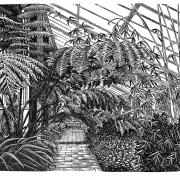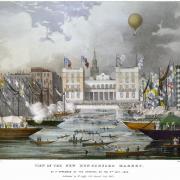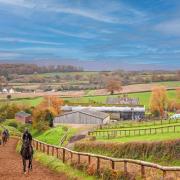The incredible story of bringing Somerset's precious horticultural history back to life inspired on MBE for its chief executive Philip White. The award was given for his services to heritage garden restoration in the 2013 New Year's Honours
Remarkable restoration earns Philip a gong
The incredible story of bringing Somerset’s precious horticultural history back to life inspired on MBE for its chief executive Philip White. The award was given for his remarkable services to heritage garden restoration in the 2013 New Year’s Honours list.‘This has come as a great surprise, but it’s been a great privilege to be able to restore Hestercombe’s extraordinary historic landscape,” he said. “I have been associated with the gardens since 1992 when I first realised that hidden beneath the coniferous woodland and brambles in the valley behind Hestercombe House, were the remains of a once beautiful, eighteenth century landscape garden complete with lakes, cascades, garden buildings and stunning vistas. You could say, it then became my life’s mission to restore it!’Hestercombe already boasted a grade 1 listed formal Edwardian garden, designed by architect Edwin Lutyens with planting plans by Gertrude Jekyll, which had initially undergone restoration in the 1970’s, but it was Philip White’s determination to uncover the landscape garden that transformed the whole site into the acclaimed attraction it is today and listed amongst the top 20 gardens in Britain as well as the most visited garden in Somerset.Former dairy farmer and wildlife conservationist, Philip’s achievement is one of sheer determination and endeavour which involved mortgaging his house to fund the initial felling of hundreds of trees and removing 17,000 tonnes of silt from the choked up lakes. Securing a grant from the Countryside Commission in 1993 for a historical survey of the site provided the information that allowed the restoration to move forward and armed with a water colour of the garden by its original 18th century creator, Coplestone Warre Bampfylde, Philip White was able to start to reveal the structure of the garden; the mausoleum and temple were rebuilt and the Great Cascade flowed again.Ten years later a Heritage Lottery grant of £3.7 million towards the total £4.9 million cost of the next stage of restoration and development enabled the coach house and stables to be converted into a state of the art visitor centre as well as continuing the restoration of the landscape and formal gardens. A £1.6 million project to restore the seventeenth century mill and barn complex, and ongoing restoration in the Edwardian garden and Victorian shrubbery have contributed to Hestercombe’s unique status as being the only site in Britain where visitors can explore three centuries of garden history.The latest exciting project involves Hestercombe House, which is shortly to be gifted to the trust by Somerset County Council when it will be put to a number of uses including becoming the Hestercombe Centre for Young Musicians, part of the Guildhall School of Music and Drama.Chairman of the Hestercombe Gardens Trust, Sir Andrew Burns said: “Philip’s determination to restore what has become one of the top gardens and tourist destinations in Britain should not be underestimated. He has done a great service to the local area in terms of employment and economic development but more importantly he has saved this extraordinary site for the benefit of future generations.”



























